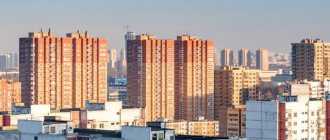Types of valves
To determine the position of the device and find out how the valve opens or closes, you first need to know the type of device installed.
In household systems the following are most often installed:
ball valves. There is a metal ball in the body of the device, which serves as a locking mechanism. The body and locking element are usually made of durable metals (brass, steel, bronze), which ensures a long period of use of the device;
Valve with ball-shaped locking mechanism
plug valves. The locking elements in this type of device are cylindrical or conical plugs. The plug valve body is also made of high-strength metal. The locking mechanism allows the valve to be used in pipelines with aggressive media.
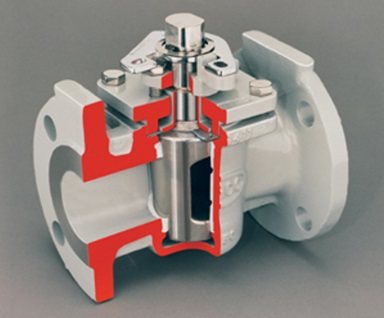
Valve with cylindrical plug
In most cases, ball valves are installed on heating and water supply systems, and plug valves on gas pipelines.
Is it possible to turn off the radiator in the summer?
All operating organizations state that they do not drain the system in the summer, but “drive” cold coolant. In reality, the system is drained: for repairs, replacement of pipes or equipment, etc. And although all radiator manufacturers say that it can stand without water for two weeks (or a week) a year, no one guarantees that the system will be filled in two weeks. This situation is not critical for copper and copper-aluminum radiators - copper generally has oxygen or not - it practically does not react to its presence in any way (after an oxide film has formed on the surface).
To avoid damage to radiators, many people close the radiators with ball valves after the end of the season. But you can’t do this: the battery can simply rupture.
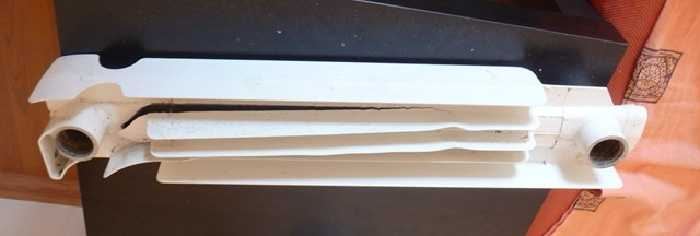
If you turn off the radiator in the summer and do not open the air vent, the battery may simply rupture
The fact is that in the presence of water in the radiator, chemical processes occur, which are accompanied by the release of gases. When the taps are closed, the possibility of their exit is cut off. Gases accumulate more and more inside, creating excess pressure. Once it exceeds its tensile strength, the battery will burst. And this will not be a warranty case: the operating conditions have been violated.
This problem is relevant for aluminum ones. cast iron, bimetallic and steel radiators. That is, for everyone. But what to do? It’s both bad and bad. And the solution is this: shut off the battery, but at the same time open the air vent.

If you turn off the radiator for the summer, make sure that the air vents are open and in working order.
Today, every modern radiator has this device. Most often - the Mayevsky crane. This is a small washer with a hole, with the help of which it is necessary to bleed air after starting the system and during the heating season. In manual models, you need to use a wrench or a screwdriver to turn the screw counterclockwise. In automatic ones, bleeding occurs as air appears. But even here there is a screw cap that blocks the exit of gases. So here it is. If you decide to shut off the battery for the summer, make sure that the air vents are open and the air is released (not clogged). It also doesn’t hurt to make sure at least once a month that the air vent is still open, otherwise you never know: the children were playing, or someone absent-mindedly twisted it...
Why is this considered saving?
The benefit of switching to self-sufficiency of hot water seems obvious, considering that the cost of one cubic meter includes the total heat loss throughout the entire system. As an example, consider a special case for a small apartment in the Moscow region. As of July 2020, regional tariffs for utilities are as follows:
A family of four consumes 16 m 3 of hot water on average per month, that is, they pay 1,933.12 rubles for city hot water supply. per month. The cost of water itself in the domestic hot water tariff is 493.92 rubles, the remaining 1439.20 rubles. - these are the costs of heating 16 m 3 of water to 50 ° C, that is, 89 rubles. 95 kopecks for 1 m 3.
As you can see, water heating installations in the city system are not very economical, because they consume 17.9 kW of electricity at a single rate rate or 14.9 m 3 of natural gas to heat one cubic meter.
Some features of popular systems
In order to somehow highlight their protection against water leaks, manufacturers are trying to improve reliability or come up with other moves. It is impossible to systematize these features, but it is better to know about them when choosing.
Capabilities of one block
For different manufacturers, one control unit can control a different number of devices. So it won't hurt to know this.
- One Hydrolock controller can service a large number of wired or wireless sensors (200 and 100 pieces, respectively) and up to 20 ball valves. This is great - at any time you can install additional sensors or install several more cranes, but such a reserve of capacity is not always in demand.
- One Akastorozh controller can service up to 12 wired sensors. To connect wireless, you need to install an additional unit (designed for 8 Aquawatch Radio pieces). To increase the number of wired ones, install another module. This modular expansion is more pragmatic.
- Neptune has control units of different powers. The most inexpensive and simple ones are designed for 2 or 4 taps, for 5 or 10 wired sensors. But they do not check the functionality of the taps and do not have a backup power source.
As you can see, everyone's approach is different. And these are just the leaders. There are even smaller campaigns and Chinese companies (where would we be without them) that either repeat one of the above plans or combine several.
Additional functions
Additional ones are not always unnecessary. For example, for those who are often on the road, the ability to control cranes from a distance is far from superfluous.
- Gidrolok and Akvatorozh have the ability to turn off water remotely. For this purpose, a special button is placed at the front door. Go out for a long time - press and turn off the water. Aquawatch has such a button in two versions: radio and wired. Gidrolok has only wired ones. The Aquastore radio button can be used to determine the “visibility” of the wireless sensor installation location.
- Hydrolock, Akvastorozh and some Neptune variants can send signals to the dispatch service, security and fire alarm systems, and can be built into the “smart home” system.
- Hydrolock and Akvastorozh check the integrity of the wiring to the taps and their position (some systems, not all). In Hydrolock, the position of the locking ball is controlled by an optical sensor. That is, when checking there is no voltage in the tap. The Aqua Watchman has a contact pair, that is, at the time of testing, voltage is present. Protection against water leaks Neptune also monitors the position of the taps using a contact pair.
The hydrolock can be controlled using a GSM module - via SMS (commands to turn on and off). Also, in the form of text messages, signals about accidents and “disappearances” of sensors, broken cables to electric taps and malfunctions can be sent to the phone.
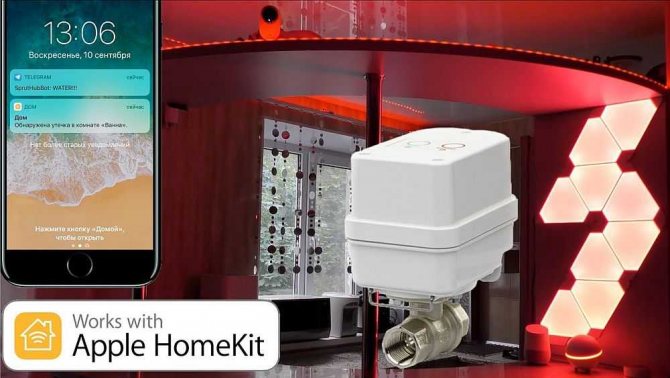
Always being aware of the condition of your home is a useful option.
On the issue of reliability: power supply and other issues
Reliable operation does not only depend on the reliability of the cranes and controllers. Much depends on the power supply, on how long each unit can operate autonomously.
- Aquawatch and Hydrolock have backup power sources. Both systems shut off the water before the backup power supply is completely discharged. Neptune has batteries only for the last two models of controllers, and then the taps do not close when discharged. The rest - earlier and less expensive models - have a 220 V power supply and no protection.
- Neptune's wireless sensors operate at a frequency of 433 kHz. It happens that the control unit “does not see” them through the partitions.
- If the batteries in the Gidroloka wireless sensor run out, the alarm on the controller lights up, but the taps do not close. The signal is generated several weeks before the battery is completely discharged, so there is time to change it. In a similar situation, the Aqua Watchman shuts off the water. By the way, the Hydrolock battery is soldered. So changing it is not so easy.
- Aquawatch has a lifetime warranty on any sensors.
- Neptune has wired sensors that are installed flush with the finishing material.
We looked at all the features of the three most popular manufacturers of water leakage protection systems. In short, the worst thing about the Aquawatch is the plastic gearbox on the drive; the worst thing about the Hydrolock is the high power of the system and, accordingly, the price. Neptune - inexpensive systems are powered by 220 V, do not have a backup power source and do not check the functionality of the taps.
Naturally, there are Chinese leakage protection systems, but you should choose them with caution. https://www.youtube.com/embed/EW3HuvRojwA
What is anti-flood and how does protection against water leaks work?
The anti-flood system consists of several elements: water presence sensors, electrically controlled taps or valves, and a control unit. Sensors for monitoring the presence of water are placed in places where leaks are most likely. Electric taps are placed on risers with water in key places in the water supply and heating systems - in order to minimize the amount of spilled water in the event of an accident. Crane drives and sensors are connected to the monitoring and control unit (controller). It processes signals from sensors and, in the event of an emergency signal, supplies power to the taps. They operate by blocking the flow of water/coolant. Here, in a nutshell, is how water leak protection works.
Protection against water leakage consists of three components: water sensors, electric taps and a controller that controls it all
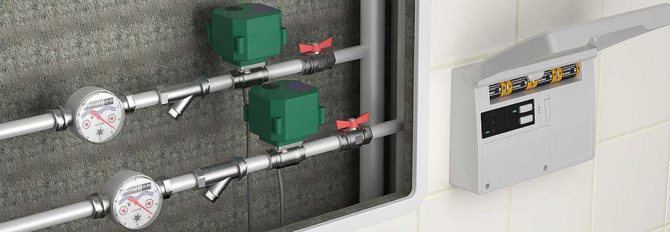
These systems are installed both for water supply - hot and cold, and for heating. After all, an accident in the heating system is probably even worse than in a water supply system - hotter water causes more damage and can also cause serious burns. In general, for flood protection to be effective, you need to think carefully about the installation locations of sensors and taps.
What to do if the fluid leaks
The problem of faulty plumbing worries many; even on the Internet you can often find queries on this topic, for example, “faucet is leaking, how to fix it, video.” Meanwhile, most faults are easily fixed.
Currently, the most common are single-lever faucets with a cartridge (faucet axle box). Both hot and cold water in such a mixer are turned on by lifting a single lever. Most often, incorrect operation of faucets of this type is caused by a cartridge that has become unusable. In this case, you just need to replace the cartridge with a new one. For repairs, you will need a small flathead screwdriver, an adjustable plumber's wrench and a new cartridge.
The faucet is leaking in the bathroom or kitchen. Procedure:
- Turn off hot and cold water.
- Remove the upper part of the lever-handle.
- If there is a protective clip blocking access to the screw, remove it.
- Use a screwdriver to unscrew the screw.
- Now carefully remove the lever and unscrew the decorative cover covering the cartridge nut.
- Using an adjustable wrench or a suitable wrench, unscrew the nut and remove the cartridge by hand.
- Insert a new cartridge and repeat all steps in reverse order.
- All that remains is to restore the water supply and check the operation of the tap.
How to shut off a heating riser
The heating riser belongs to common property. It must be blocked by employees of the service organization who have the right to do so.
If you follow the letter of the law, you must come to the DEZ, Housing Office, DEU, etc. write an application, pay for the service at the cashier. At a certain time (indicate in the application) a representative of the service organization must come and turn off the valve in the basement.
How much does it cost to turn off the heating riser? This is not an easy question. The fact is that there are no fixed prices. There is a price list for services, but it is only a recommendation. In reality, each organization sets its own prices. On average, you will have to pay from $15 to $20 for this operation.
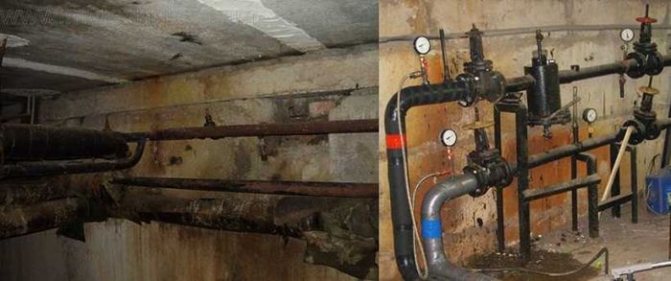
The valve that shuts off the heating supply is located in the basement of the house
There is a workaround. Agree with neighbors and shut off the riser yourself without the campaign’s knowledge. But you know that this is not always possible: neighbors are different. If in the summer, when the heating is turned off, such actions may meet with understanding, then during the season - it is unlikely. There is another difficulty: the heating valve is not always easy to find. You either need to have a communication scheme, or just know where it is. They usually know a locksmith. But they won’t block the riser for free, and will require at least $10-15. There seem to be savings, but they are small. And if this fact becomes known to the management or operational company, you will face substantial fines.
Who to entrust the work to?
Since you will still have to pay, it is better to do everything at once. In any case, with all the radiators on one riser. And here the question arises: who will carry out this work. To get started, you can go to the housing office or departmental office and ask about their prices. As a rule, the prices there are rather high, and the quality of work is not up to par. To make sure of this, you can ask neighbors who have already dealt with them.
You can find a private owner. Just not from advertisements, but from the recommendations of acquaintances, colleagues, friends. Their prices are rarely higher than those of operators. And the quality is better - this is their bread: if they do a bad job, there will be no customers. That’s why they try (if they are sane) to do everything conscientiously.
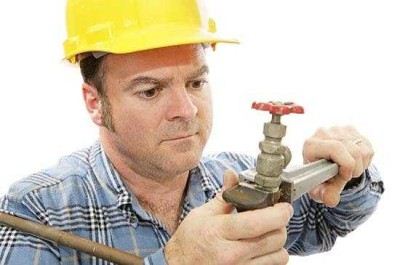
Choosing a performer is not an easy task
There is still an opportunity to negotiate with the housing office employee by bypassing the cash register. But here the option is controversial. Firstly, they tend to ask for a price based on the client’s wealth and it is far from a fact that they will demand less than the price list. More likely - more. Why, tell me, should they pay more for the same quality of work (it is unlikely that they will work more diligently than at their main job)?
Another option is to contact a specialized organization. And again, preferably based on recommendations. Although, organizations are forced to monitor the quality of work for prosaic reasons: they need clients. If they have a bad reputation, no one will go to them
Therefore, if you don’t know the organization, there are no recommendations, you can pay attention to the period of its existence on the market. If it’s not a year or two, then they definitely know how to do something, otherwise they wouldn’t have existed for so long
Naturally, pay attention to the services they provide. Many people suggest that issues with permission and disconnection of risers should be handled by the management or operating organization. You just specify the list of works and time. How expensive will it cost? In different ways: organizations, like their leaders, are different. It may be more expensive than the work of a mechanic from the housing office, but at least you will have someone to file a claim with in case of problems: you sign an agreement that will clearly outline who is doing what.
And the most economical option: do everything yourself, with your own hands. It’s not an easy task, but it’s not the gods who burn the pots. Just first you need to find out everything down to the smallest detail, purchase everything you need, prepare tools and equipment, and only after that write an application to turn off the riser.
This all concerned planned repairs or preventive maintenance. If a radiator or pipe is leaking, you definitely have to take action yourself. Read how to fix a radiator leak here.
How to find the cause of overflow?
So, as mentioned above, first you need to correctly identify the cause of the plumbing failure. Of course, for this you need to know the location of the parts and their names. This is perhaps the most important rule. Ignorance of this can lead to problems with troubleshooting. You simply won’t know which part needs to be replaced, what to screw in and where, how to install it correctly, etc. It is important to pay special attention to the gaskets; they ensure the safety of water flow. The better this gasket is made, the better the result itself will be.
Operating principle of the cistern
What should you do if the water in the toilet tank overflows? In order to find out the reason, you should press on a special bell. Let's say the water no longer flows. This means that the nut in the tank simply unscrewed. In this case, it needs to be returned to its previous position, that is, tightened. To do this, you need to remove the shelf. But there is also a situation in which the nut is located at the very surface of the tank, that is, sticks to it. Then the overflow should be carried out clockwise, so it will take the desired position.
Related article: How to disassemble a toilet
And it also happens that everything is fine with the nut, that is, it does not stick to the surface of the tank, but the water still flows. Then you need to follow these steps:
- This is done when the nut is completely unscrewed. You should turn off the water supply and allow the toilet tank to dry. Afterwards, dismantle the overflow itself. Next, carefully wrap some kind of seal onto its threads. Please note that it should fit very tightly into the hole through which the water drains. Then you can put everything back in its original place. You need to coat the repair area with paint and let it dry, this is necessary so that the repair’s tightness is better. Everything is ready, enjoy.
- This technique is performed if this part is not completely unscrewed, but there is still a gap. Carefully turn off the water, after which the tank should dry thoroughly. You need to wrap tow in the resulting gap, after which you need to paint this area well. It is important to use quick-drying paint so that it dries well. Everything, repairs have been made, the toilet is in working order.
Please note that the overflow hole itself must be open; it must not be blocked under any circumstances. If the hole is clogged, water can overflow from the tank directly onto the floor and ruin not only your renovation, but also harm the neighbors below.
This unpleasant situation can also happen when the overflow is free through. This means that the installation of the toilet tank is faulty. This violation was committed specifically in the fastening of the toilet and shelf, namely, the bolts were loosely screwed on. As a result, the overflow occupies a position above the walls. It happens that the bolts cannot be tightened securely due to their corrosion, then the overflow level should be shortened somewhat. All you need to do is a special recess, which will be located from the edge of the overflow to the desired level. It is quite easy to do it yourself, since there is nothing complicated here. So-called wire cutters are well suited for this; if you don’t have them in your toolbox, you can use a knife, but it will need to be heated well. It is not advisable to use other objects, since only wire cutters and a knife can do this work without damaging the part at all.
Eliminating whistling, humming and noise
In addition to a banal leak, the following problems are quite common: the tap turns; weak water pressure in one of the taps; noises that appear when the water is turned on.
First, let's figure out why the faucet whistles (or hums). Noises can be caused by a worn gasket on the faucet valve or a poor-quality cartridge on the mixer. Change the gasket to a new one (made of thick rubber) or a low-quality faucet axle box to a ceramic product from a reliable manufacturer and the whistle when turning on the water will disappear.
What to do if the water from one tap flows in a weak stream? Presumably, the problem can be caused by a clogged coarse filter installed on the mixer or tap. It is enough to clean and rinse the filter and the water pressure will be restored. The reason may be even more trivial - a clogged mesh on the faucet tap; it can be easily unscrewed and washed.
Valves rotate due to worn threads or a leaky gasket on the valve head. This happens due to torn or worn threads. To eliminate the problem, replace the valve with a new one. If the thread is in order (this can be seen during disassembly), simply change the gasket.
How to shut off the battery
To perform some work, you only need to turn off the radiator:
If shut-off valves are installed - ball valves. This is easy to do: you need to turn the tap handle until it stops on the supply and return pipes. The coolant flow is blocked, the heater can be removed.

If there are ball valves in front of the radiator, close them and remove the radiator
Sometimes a manual control valve is installed at the supply. It can also shut off the coolant supply, but its main function is to regulate: it is installed to maintain a constant temperature in the room.
If the heating season is over, after closing the taps, you can safely remove the radiator. If there is a need to carry out work during the heating season, it is necessary to take into account the peculiarities of the installation. In a single-pipe system with vertical distribution, shutdown without stopping the system is possible only if there is a bypass.
A one-pipe system with vertical wiring looks like this: one pipe comes out of the ceiling, goes to the radiator, the second comes out of another hole in the battery and goes to the floor.
The bypass is a jumper placed in front of the radiator. It connects the supply and return pipes. It is usually carried out with a pipe size one step smaller than the diameter of the liner.
If there is a bypass, then when the radiator is turned off, the coolant continues to circulate through the riser, but already flows through this jumper. As a result, no one suffers: the neighbors are warm, you carry out the required work.
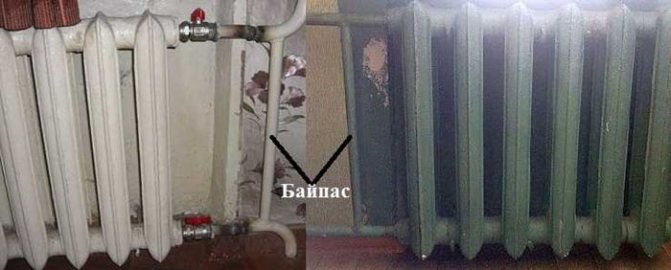
The bypass is a jumper in front of the battery. In the photo on the right, even though there is a bypass, there is nothing to shut off the battery: there are no ball valves
When connecting using a two-pipe scheme, there are no problems: there are taps, close them, remove the radiator. With a single-pipe system, but with horizontal wiring, jumpers are also needed. But, in their absence, you will freeze your apartment.
In general, a bypass is a very necessary element: if necessary, it allows you to install a thermostat (thermostat) at the inlet of the radiator, with which you can maintain a constant temperature in the room. Without this jumper, installation of control devices is prohibited. It’s just that without it, it turns out that you regulate not only the temperature of your battery, but also the entire riser, which is unlikely to please your neighbors.
But just the presence of a bypass does not guarantee the ability to turn off the battery during the heating season. There should also be ball valves on the supply and return. Moreover, it is better to take full-bore valves for heating radiators. There are also standard ones. In them, the clearance in the open position is approximately 70-80% of the diameter. In full bore models it is 100%. To ensure normal heat transfer, they are exactly what is needed.
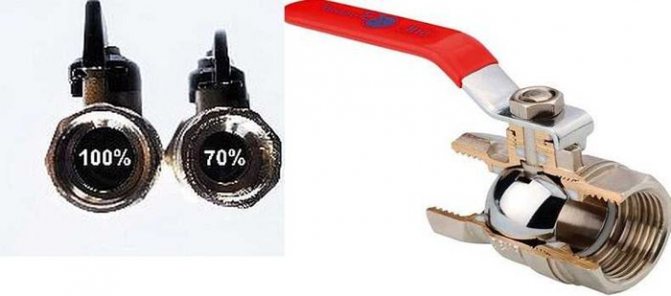
The battery can be disconnected at any time if there are ball valves at its inlet and outlet. But to ensure that heat transfer does not decrease, it is necessary to install full-bore models
If there is no bypass, to carry out all this work you will have to turn off the riser, and this is not done soon, and even at a cost.
Where to install taps/valves with electric drive
Installing faucets is not easy. Specific installation locations depend on the system design. If it is a small apartment with one or two risers - cold and hot water - everything is simple. We close off the outlets and that’s it. In more complex systems, it is necessary to think about the installation location of electric cranes.
The placement of shut-off valves depends on the system design
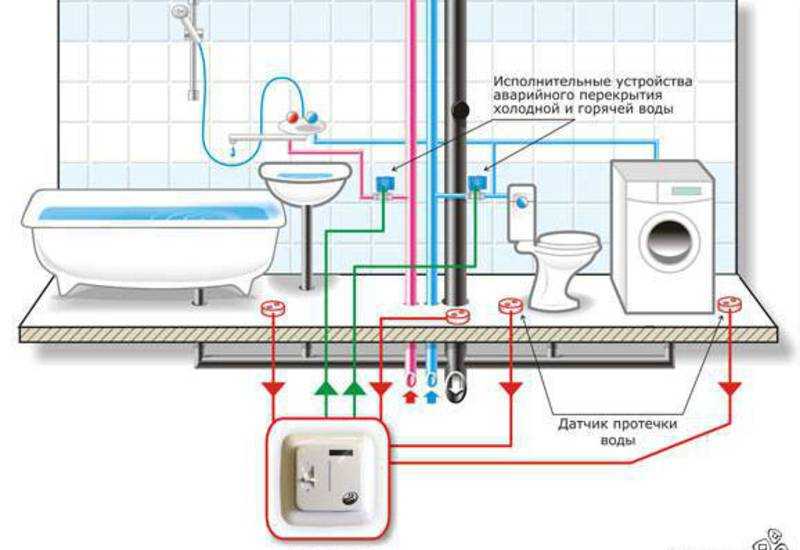
In apartments
If the water supply is centralized, the system’s leakage valves are placed at the entrance to the apartment/house. It is much better if the taps are located before the meter and filter. But operational services may disagree with this arrangement. They usually require that the electric faucet be located after the meter. In this case, if there is a leak, the connection between the meter and the filter always remains under pressure. It will be impossible to eliminate leaks at these points. You can insist on your point, but you have to prove your point of view.
Advice! Before installing a leakage protection system, contact your management company and find out whether there will be problems when sealing meters if electric taps are installed in front of them.
In some layouts, the apartment may have four risers - two cold and two warm water. In this case, there are two solutions - a more correct one and a more economical one. That's right - install two modules, each of which will serve its own zone. This is more convenient, since an accident will occur only on one of the risers/devices and it is unreasonable to disconnect the opposite part. But two modules mean double costs. To save money, you can install one control unit that will shut off the taps for 4 risers. But in this case, do not forget that you will have to run the wires through the entire apartment.
We need to think about where to install the system elements
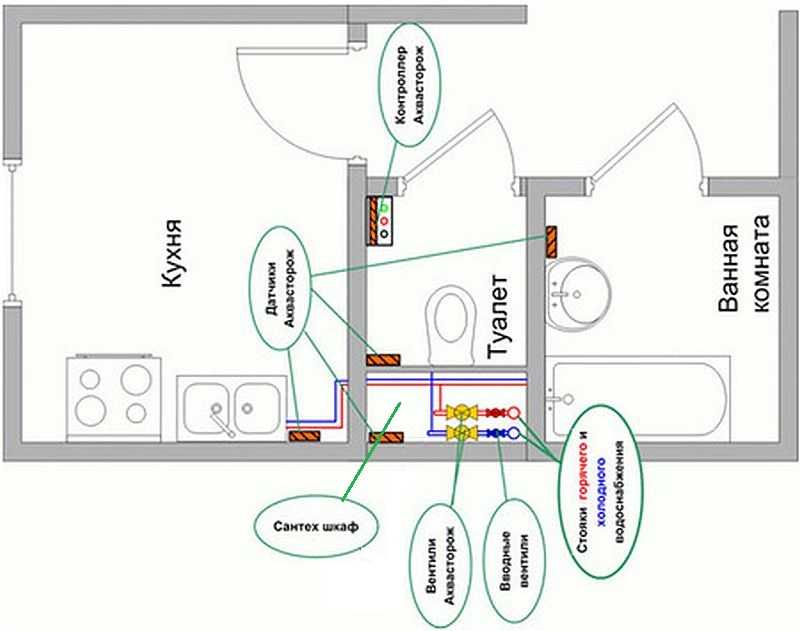
In the case of heating, too, not everything is simple. Most high-rise buildings have vertical wiring. This is when there is a riser in each (or almost every) room and one or two radiators are powered from it. It turns out that for each outlet it is necessary to install at least one tap - for supply. But then the water contained in the radiator and pipes will leak out. This, of course, is not so much, but sometimes a couple of liters is enough for the neighbors below to have a stain on the ceiling. On the other hand, installing two taps on each radiator is too expensive.
In a private house
To prevent the pump from pumping water in the event of an accident, it is necessary to use a water leakage protection controller with a power relay. If power is supplied to the pump through the contacts of this relay, simultaneously with the signal to close the ball valves or valves, the power to the pump will be turned off. Why not just turn off the power to the pump? Because in this case, all the water that is in the system can spill into the resulting gap. And this is usually a lot.
To understand in which places in the water supply system of a private home it is necessary to install taps to prevent water leaks, you need to study the diagram. Most often, shut-off valves with electric drives are installed after the pumping station and on the boiler.
Protection against water leakage can be included in the kit, or you can assemble your own configuration from components
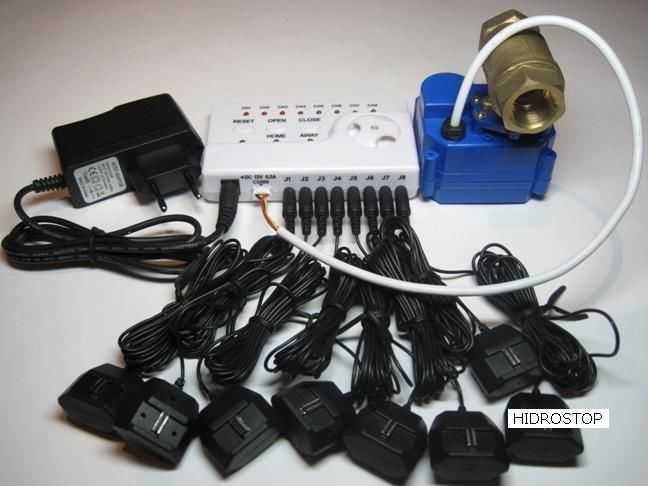
Heating is a little more complicated. You should not block the flow of coolant if it is impossible to immediately extinguish the boiler. That is, in systems with solid fuel boilers, water leakage control can be installed only if it does not block the circulation of the coolant. If there is a small circulation circuit, you can install valves so that this small circuit is running while the rest of the system is turned off. If a heat accumulator is installed in the system, it is necessary to install the taps so that water does not spill out of it. These are large-volume containers - at least 500 liters, and usually many times more. If all the liquid spills out, it won't seem like much.
In heating systems with automated boilers, taps may block circulation. If the water leakage protection works and blocks the circulation, the boiler will stop due to overheating. This is not a completely normal situation, but it is not an emergency either.
Manufacturer Ariston
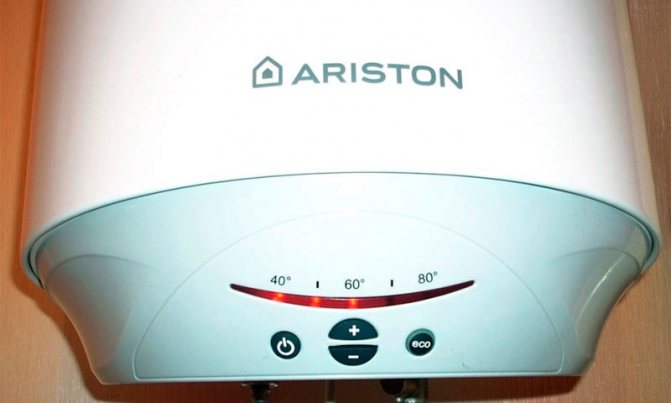
How to turn on the Ariston boiler? First of all, you will need to fill the boiler with water and connect the device to the power supply. Within the first couple of minutes, the indicator panel will start working. At the moment, your boiler is not yet turned on, as indicated by flashing temperature indicators.
In order for the device to start working, press the “turn on” button; on the display you will see the current water temperature in the tank. In order to select the temperature you need, press the “+” or “-” buttons; by pressing any of these keys, you will switch to the temperature selection mode. The temperature is available in the range from 35 to 70 degrees.
The manufacturer also equipped its models with the ability to change the available power: 1500 or 2500 W. You can activate this setting by pressing the “power” button for a couple of seconds. The boiler does not have a memory function, so when it is turned off, the settings will be reset.
The Ariston mechanical model has even more simplified controls. After you have connected the boiler to the power supply, press the “turn on” button - it will light up red. As soon as the water reaches the desired temperature, the power button will go out.
The power of the mechanical model can also be increased. Its main feature is that while the water heater is operating, the red shutdown button lights up. As soon as the device stops working, the button goes off. This immediately lets us know that the water is ready for use.
Solving the problem of hot water in an apartment using gas water heaters and boilers
As a rule, turning off hot water in an apartment in summer ranges from 1 week to 1-2 months, and this is already quite a long period. And if you can use high-quality detergents to wash dishes, then only seasoned people without serious health problems can withstand daily hygiene procedures in water at a temperature of about 20 °C. Therefore, if you don’t want to heat water in a pan, then you can’t do without installing a gas or electric water heater for your apartment. In this case, the question arises: which device is best to choose for this purpose. But here everything is simple: if the house is supplied with gas, then you can choose a gas water heater, which can be flow-through or storage in type. The former are preferable due to the fact that water flows to the distribution points almost immediately and gas is consumed only to heat the amount of water that will be used. But if the pressure in the water supply network is unstable, it is not advisable to install such a device: if the pressure is low, it simply will not turn on, which means the problem will not be solved. For such situations, you can choose a storage type of gas water heater, but it has quite decent dimensions, which means the question will arise about how to place it in a limited space.
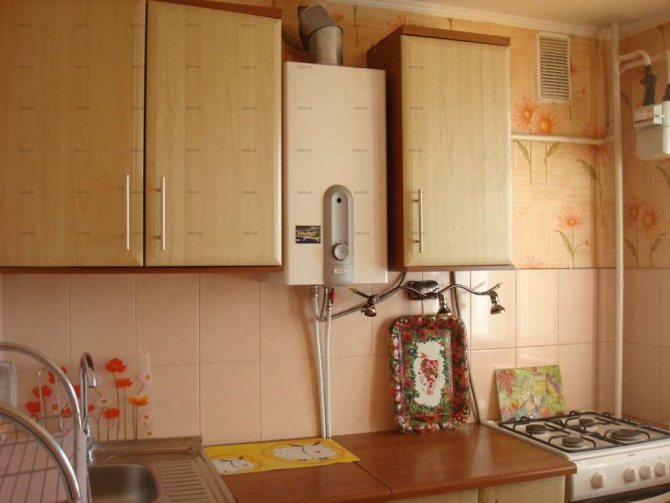
Electric water heaters
Unlike gas equipment, electric water heaters are inexpensive, do not create any special difficulties during installation, do not require obtaining permits, and operate on electricity available in every apartment, however, the cost of which is very high. But with correct calculations, the use of electric water heaters can be quite economical, but it should also be taken into account that its presence in the house will allow you to enjoy the benefits of civilization and safely survive a water outage, and then transfer the system to normal mode.
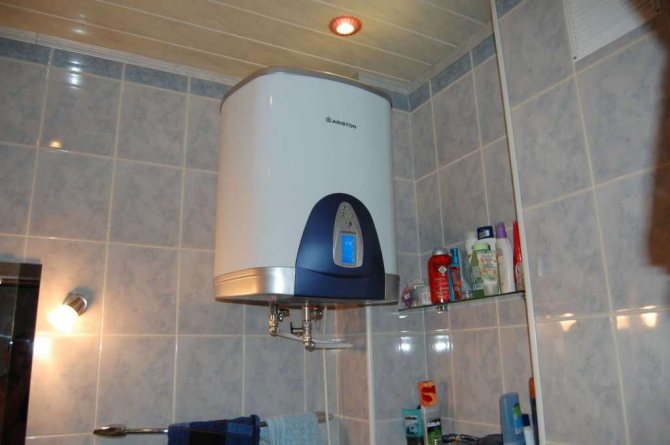
Electric boiler for an apartment
If you choose an electric water heater, then the choice will also be between a storage boiler and a flow tank. The following advantages can be cited in favor of the first:
- availability of a constant supply of water, in accordance with the volume of the tank;
- electricity consumption occurs only after the temperature of the water in the storage tank drops below a predetermined level;
- simple installation without special requirements for electrical wiring, except for its serviceability;
- simultaneous supply of several water intake points.
But it should be borne in mind that the volume of the boiler must correspond to the needs of the family, but a small adjustment can be made for seasonal use. Therefore, for a family of up to 3 people, even a 50 or 80 liter water heater is sufficient. This type of equipment is quite economical when used in summer, since it will have to heat water with an initial temperature of 20 °C and above.
Therefore, heating will occur quite quickly, but in order not to feel inconvenience, preference should still be given to more powerful devices.
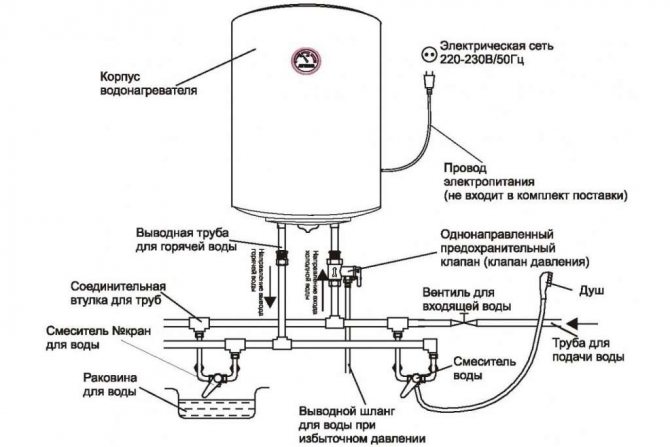
Installing an instantaneous electric water heater: pros and cons
Electric instantaneous water heaters for apartments are also quite popular at this time of year among city dwellers, but before you choose them, you should know:
- heating water using them occurs instantly, but at the same time the load on the network increases sharply, since in order to take a shower more or less comfortably, the power of the device must be at least 6 kW;
- some pressure-type models, for example, Stiebel Eltron DHC 6, can be used to supply several points;
- devices with a power of 12 kW or more must be connected to a network with a voltage of 380 V, and such conditions exist only in houses with electric stoves.
How to turn off the water
This can be done in a separate apartment only if there are special valves in the bathroom. But this method is appropriate only when minor work is planned. For example, repair a faucet. If you plan to install plumbing in a toilet/bathroom or other labor-intensive work, you must shut off the water along the entire length of the riser. This design is a pipeline. The riser is intended for 1-2 apartments.
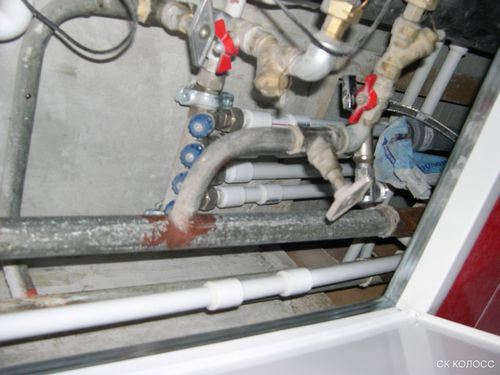
Shut off using a tap
If there is a valve in the bathroom, you should turn it clockwise until the end. What to do if the apartment is old and there is no valve? In this case, you will inevitably have to contact a specialist from the housing office. The plumber will not be able to turn off the water in a single apartment, only in the entire entrance.
In the event that a main pipe bursts, the entire house is shut off. This work may even affect several buildings.
The pipes in the bathroom and toilet located in new buildings usually have valves. Using them you can easily turn off the water in a separate apartment. In other cases, there is even a special sensor on the pipes that automatically detects problems and turns off the structure.
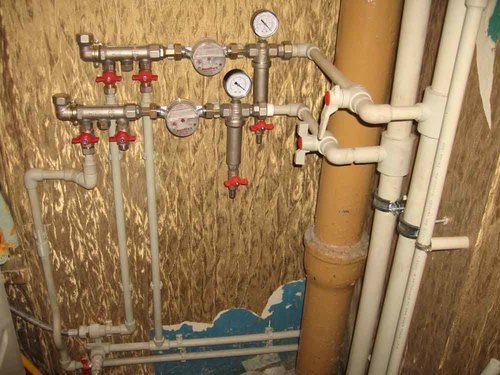
How to turn off the water in the toilet riser?
The riser is usually located in the toilet or kitchen. Its main purpose is to supply water. It can be overlapped only if there are valves on the structure. If they are not there, you need to think about installing the elements. The best choice in this case would be ball valves.
If old elements with defects are installed on the pipeline, it is better to think about replacing them, because in the event of an emergency they may fail and you will flood your neighbors. It is better to entrust their installation to a specialist. A plumber will be able to determine what diameter of the product is required specifically for your riser.
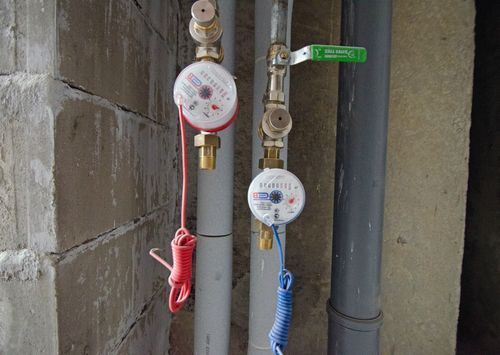
After installing the valves, you must not forget about the importance of preventative maintenance. Once every three months it is recommended to turn off the risers and then turn them on again
This is necessary so that the elements do not stagnate and cope well with all their functions. It is better to prevent their breakdown, because in an extreme situation the valves may fail, and you will not be able to do anything about it. If any problems arise, it is better to call a technician who will check the condition of the valves and carry out the necessary repair work.
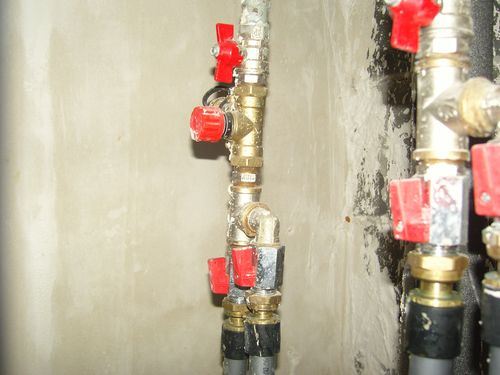
In conclusion, we can say that turning off the water is easy only if a person takes care of it in advance. If the valves have not been installed, it is almost impossible to turn off the valve in one apartment. For this reason, it is better to get ahead of the occurrence of further problems and install them, because shutdown may be required not only during repair work, but also in the event of emergency situations.
https://trubygid.ru
Protection against water leaks: parameters and selection criteria
Deciding on the number of sensors and shut-off valves is not so difficult, especially since many systems easily allow you to expand the control area. It is only important not to exceed the maximum allowable amount of equipment. But choosing a manufacturer is much more difficult - you can’t change it. Below we will present the most popular systems on the Russian market: “Aquastorozh”, “Neptune” and “Gidrolok”.
Nutrition
First, let's look at how power is supplied to different parts of the flood protection system:
- The voltage on the control unit must be constant.
- Electrically driven faucets are powered only for the period of operation - maximum - 2 minutes (Hydrolock).
- For wired type sensors - only for the period of status polling (a very short period of time).
- Wireless sensors operate on batteries.
Water leakage protection can operate on 220V, 12V and 4.5V. Generally speaking, the safest supply is 12V or lower.
Power types
Some systems are designed in such a way that the control unit is powered by 220 V, and a safe voltage of 12 V or less is supplied to the electric taps and sensors. In other options, 220 V can be supplied to the taps (some of the Neptune options). Voltage is supplied briefly - only at the moment when it is necessary to turn off the water. This occurs after an accident is detected and periodically to check and maintain the functionality of the system. The rest of the time the taps are de-energized. Which option suits you best is up to you to decide.
Also pay attention to the presence of a backup power source. If you have your own redundant power supply system (batteries, generator), this parameter can be omitted. Otherwise, having a backup power source is highly desirable. Moreover, we need to look at how long the equipment can operate in autonomous mode. In this sense, systems operating from 12 V are much more practical: if you wish, you can install a battery with suitable parameters and thereby extend the system’s operation in offline mode. Although, some systems (Hydrolock, for example) on backup power (rechargeable batteries) can operate for up to a year. During this time the electricity will definitely be turned on...
Electric cranes: which ones are better?
Let’s say right away that there is protection against water leaks based on valves and ball valves. Ball valves are more reliable. They are more expensive, but they work many times more reliably. When choosing, take the one with ball valves that shut off the water, not valves. There are no options.
But ball valves are also different. Here are the requirements they must meet:
- Made from brass or stainless steel. These metals should be used for housings, rods and locking balls. Only in this case will they serve for a long time.
- Full bore valves. This means that when open, the cross-section of the valve is no less than the cross-section of the pipe on which it is installed. In this case, they do not interfere with the flow.
Neptune ball valves can be recognized by the presence of a lever that makes it easy to shut off the water manually
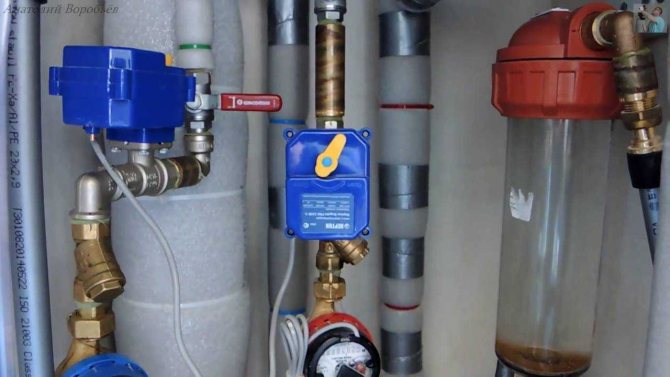
All market leaders - Akvastorozh, Gidrolok and Neptune - use only such cranes. They can be produced by different companies, but are made of high-quality metal. If the cheaper kits don't specify the material or type of faucet (full bore or not), look elsewhere.
Durability and closing time
We also need to talk about the parameters of electric drives. How reliable and durable they are determines how reliable the protection against water leaks is and how efficient the system is. Therefore, the gearbox and drive gears must be made of durable and reliable material. The most durable material that can be used here is metal. If we talk about the most well-known systems, the following situation is observed on this point:
- In the Hydrolock system, gearboxes and gears are made of metal.
- In Aquawatch, the gears are made of metal in the latest versions of the system, the gearbox remains plastic.
- Neptune does not cover drive materials.
Another important characteristic is the closing time of ball valves. In theory, the sooner the water supply is shut off in an emergency, the better. Here the undisputed leader is Aquaguard - the ball valves close in 2.5-3 seconds. But this speed is achieved:
- installing additional gaskets, which reduces ball friction but increases the risk of leaks;
- a small torque, and a small force applied when closing the tap can result in the fact that if a foreign object (sand, scale, etc.) gets in or is overgrown with salts, the tap simply will not close.
Electric ball crane "Aquastorozh Expert-20". Input voltage 4.5 to 5.5 V
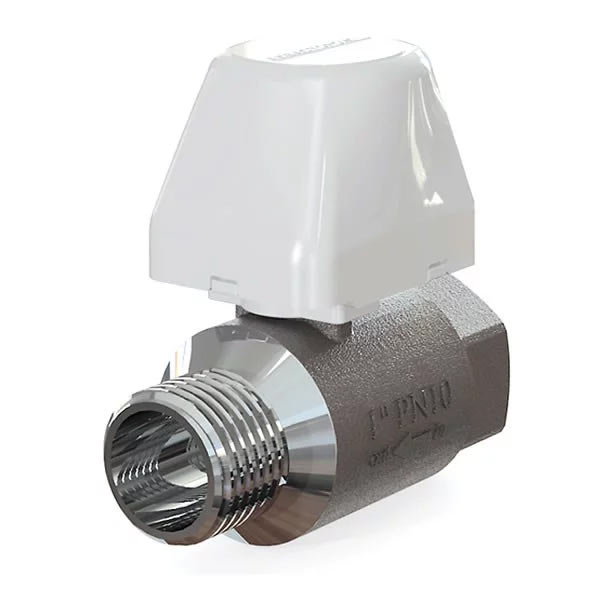
Closing force and manual mode
If we talk about the magnitude of torque, the leader here is protection against water leaks Hydrolock. Its electric drives can develop a force of up to 450 kg/m. This is a very large indicator, but these parameters are for large-section cranes, which are not used in apartments and houses. Nevertheless, half-inch and inch ones are also very powerful - they can develop a force of up to 100 kg/m. Moreover, the applied force increases in steps - if necessary, it increases from nominal to maximum.
And this is Gidrolok’s signature trick - the crane breaks a pencil... Impressive!
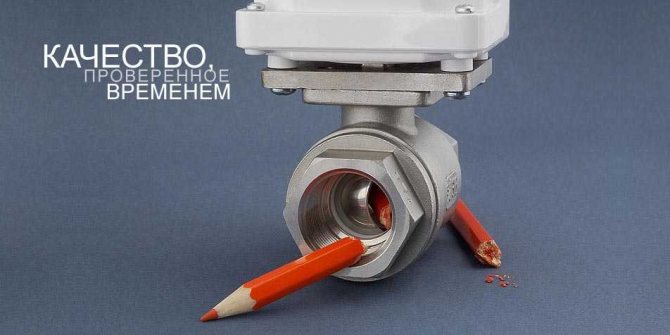
There is one more point: the ability to turn off the electric tap manually. Aquawatch and Hydrolock have parity in this regard: you need to remove the drive by unscrewing several bolts (for Hydrolock - 2, for Aquawatch - 4), then manually turn the tap. Neptune is ahead in this regard: its drives have a lever, by turning which you manually open or close the water. But these faucets are included with the most expensive of the kits.
Neptun Bugatti Pro 12 B 1/2″ faucet with lever on the body. If the drive housing is green, then the power supply is 12 Volts. Taps designed for 220 Volts have a blue drive housing
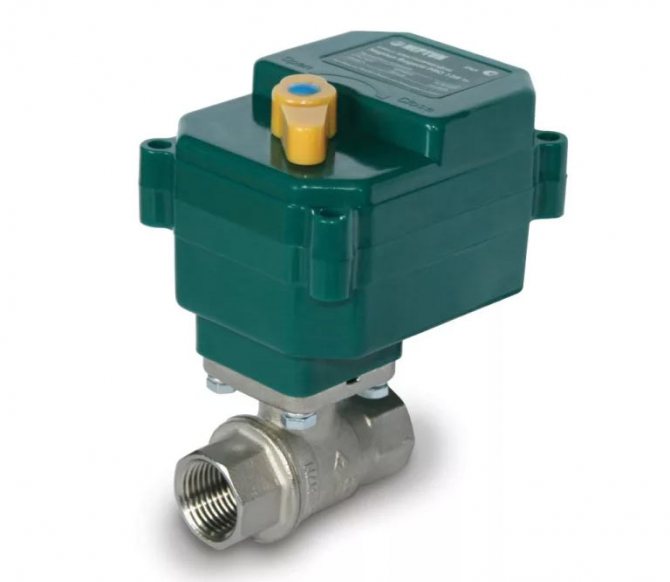
Electric crane Neptun Bugatti Pro 220V 3/4 N-30
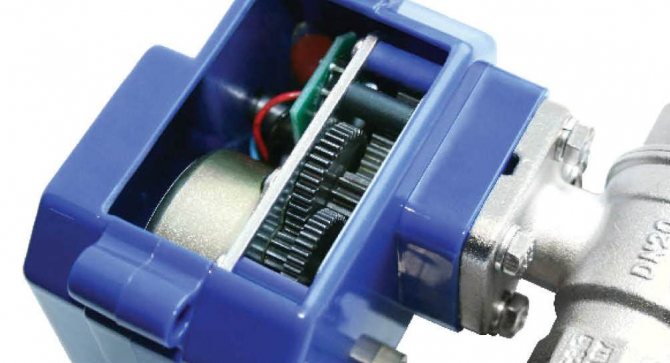
Features of the operating algorithm
The principle of operation of any protection against water leakage is the same: when an emergency signal appears, it shuts off the water supply and turns on the alarm. In this all systems are similar, but there are certain features that some like and others don’t.
The first feature is related to the processing of signals from sensors and taps. Some systems monitor the integrity of the wires that go to faucets and wired sensors. In addition, if wireless sensors are present, they are polled regularly. This is all great and such systems are more reliable, but the reaction to a “missing” sensor or faulty wire can be different:
- on the Hydrolock control panel, the alarm for loss of sensors or faulty taps lights up, but the water does not turn off;
- If any of the sensors or taps are lost, the water watchman shuts off the water;
- at Neptune, only the response of the sensors is monitored and, based on the results, an alarm lights up without specifying the location.
Here everyone chooses for themselves which option suits them best. Both ways of reacting are imperfect, so there is no single answer.
There are subtleties in the operating principles
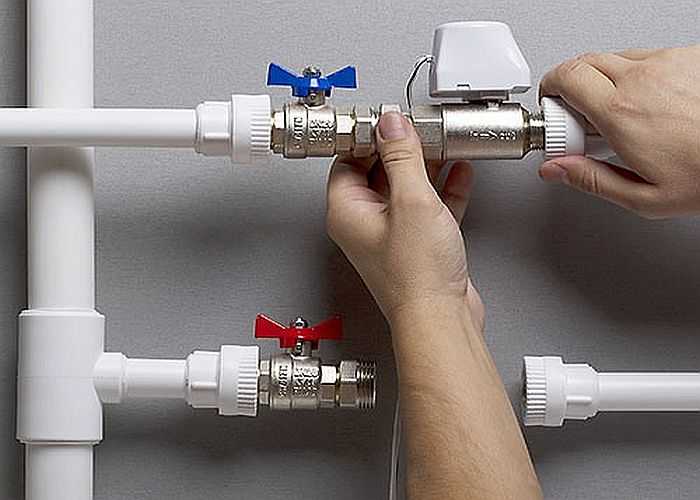
The second parameter for choosing a leakage protection system is the frequency of checking the functionality of the taps. Since our water is far from being of the best quality, if it is not used for a long time, the shut-off ball can become “overgrown” with salts or, as they say, “stick.” To prevent this from happening, the controllers periodically “move” the taps. The frequency varies:
- protection against water leaks Gidrolock (Gidrolock) tests once a week;
- any Aquaguard controller turns the ball valves once every two weeks;
- Some Neptune options do not have this function; there are those that open/close taps once every two weeks.
Some fear that testing the functionality of the faucets will catch them in the shower. Of course, it’s not pleasant to be soaped without water, but none of the owners have ever complained about such cases. So it's not nearly as dangerous as it seems.
